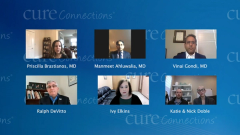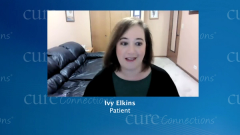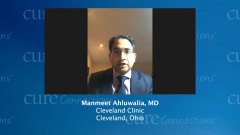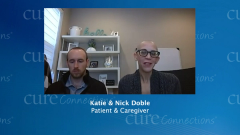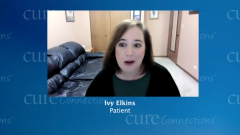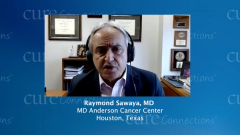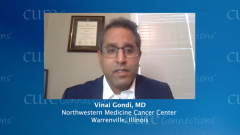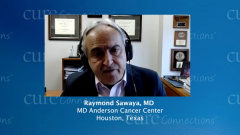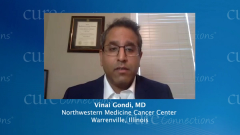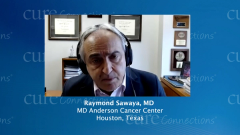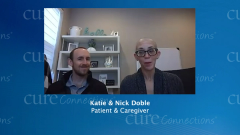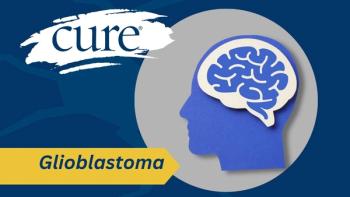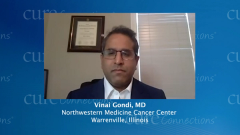
Systemic Therapies Used for Cancer That Has Spread to the Brain
Episodes in this series

Priscilla Brastianos, MD: Dr. Ahluwalia, tell us broadly about systemic therapies. I know we can write an entire textbook on this, but tell us about systemic therapies for patients with brain metastases.
Manmeet Ahluwalia, MD: Sure. As I’ve mentioned, traditionally we use cytotoxic chemotherapies. These would be like DNA-damaging agents that we would give to patients, and they had limited blood-brain barrier penetration. The benefits of these therapies were 5% or less in most patients, and there were sizable toxicities that were associated with these agents. But in the last 10, maybe 15 years, we have identified genetic mutations that can be driving the cancer in patients’ cases. As Ivy Elkins alluded to, she had an EGFR mutation. EGFR lung cancer drove the initial drug development in solid tumors, especially with brain metastases, where we had therapies working in the brain—first-generation drugs like erlotinib and gefitinib—and then second- and third-generation drugs like afatinib, as was mentioned in her case. Now we have osimertinib, which has even better blood-brain barrier penetration. These precision medicine approaches or targeted therapy approaches are also getting better.
I’ll use a couple of examples to highlight this. EGFR is a mutation that occurs in those who have lung cancer, in around 10% to 15% of the Caucasian population and up to 50% of the Asian American population. The first-generation inhibitors, drugs like erlotinib and gefitinib, had good efficacy, but the second-generation drugs like afatinib, and now third-generation drugs like osimertinib, have even better efficacy. They work in around 70% of patients where the lesions can decrease or shrink in size when we treat them.
Another alteration that we find in lung cancer is ALK, and there the first-generation drug was crizotinib, and the benefit was around 20% to 30%. In 20% to 30% of patients, the lesions shrank when we gave these drugs. But now we have second- and third-generation drugs like alectinib, lorlatinib, brigatinib, and ceritinib, and the benefit with these drugs, because they’re better blood-brain barrier penetration compared with the first-generation drugs, is 50% to 70%. About five or seven of 10 patients we treat will have shrinkage of lesions or their brain metastases. So not only are there precision medicine–based approaches, but those approaches are getting better with time, because the newer drugs are more precise to deliver or act on the brain metastases and have better outcomes for the patients.
The next aspect, which I had alluded to before—it has been really exciting for me as an oncologist—is the use of these immunotherapies. They have really changed the landscape of lung cancer, melanoma, types of breast cancer and head and neck cancer, and they are undergoing evaluation in a number of other cancers as well. We initially used to think that brain was an immunotherapy site, that the immunotherapies wouldn’t work in the brain. But now we know that these immunotherapies can have benefit even in the brain, independent of the benefit in the body. In Katie Culos’s case, she is being treated with TILs [tumor infiltrating lymphocytes] and IL-2s. Ten years back, we wouldn’t have thought that this was possible. Now we know that these approaches—which target the immune component of patients, because we actually boost patients’ immune system to fight the cancer—can work extremely well in brain metastases. It’s very heartening as a health care provider but even more important for patients and their caregivers.
Priscilla Brastianos, MD: Thank you so much. That was a great summary, Dr. Ahluwalia. I just want to emphasize the point that Dr. Ahluwalia made, that there is a lot of hope now for patients with brain metastases because there are new drugs constantly being developed and new drugs showing efficacy. Granted, we still have a long way to go because not every patient will respond, which highlights why we need to do more work in this area. But there’s a lot of hope for better treatments coming for patients.
Transcript Edited for Clarity


